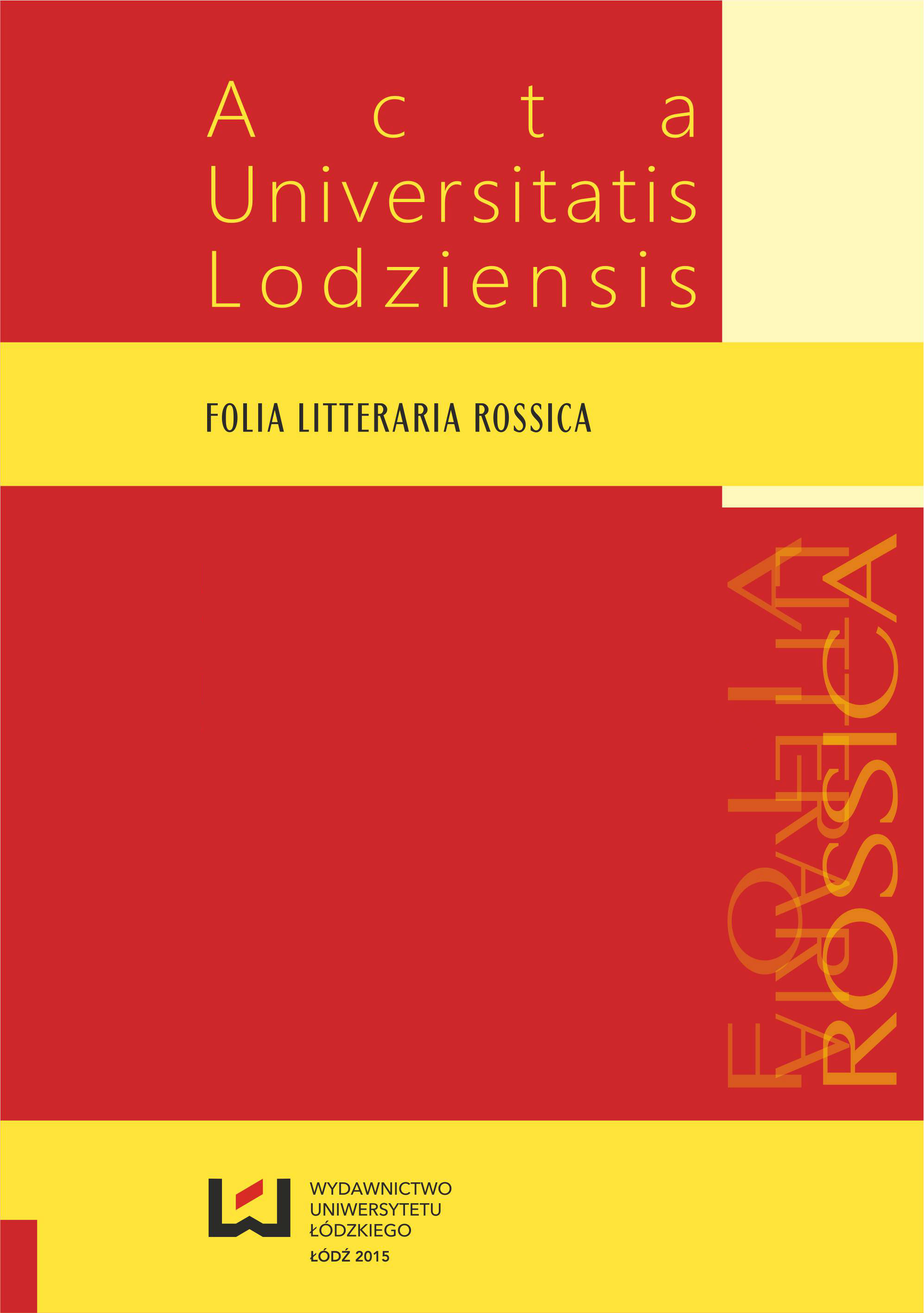«Словесная живопись» в историческом повествовании: от Пушкина к А.Толстому
‘Verbal Art’ in the Historical Narrative: From Pushkin to Aleksei Tolstoy
Author(s): Natalya VershininaSubject(s): Language and Literature Studies, Studies of Literature, Russian Literature
Published by: Wydawnictwo Uniwersytetu Łódzkiego
Keywords: poetics; ‘verbal art’; visual image; historical novel; artistic historicism
Summary/Abstract: The article discusses the poetics of ‘word painting’ in the generic and stylistic development of historical prose: from Pushkin’s Peter the Great’s Negro (1829) to Tolstoy’s novel Peter the Great (1930–1945). It is revealed that ‘verbal art’, along with ‘Walter Scott’s’ type of description of the epoch, functioned in novelistic texts as the most productive means of expression for artistic historicism. The opposition between this method of representation and that of static historical description – as in the ‘boyar chapters’ of Peter the Great’s Negro – is explained. It was this that may have caused the breach in the stylistic integrity of the novel and determined the incompleteness of its conception and realization. In their dynamic presentation of the life in ‘Peter’s Russia’, both Pushkin and Tolstoy blend antithetic techniques: viewing reality from a historical distance – with a direct vision of phenomena, generalizing historical and philosophic formulas – with objectified specificity of visual expression. With the help of the ‘verbal-art’ methods, an insight into the epoch is made possible by combining points of view and showing an image from varied angles. This serves achieving an artistic effect defined by Aleksei Tolstoy as ‘contemplation through somebody else’s eyes’, which illustrates the problem of ‘varying scale’ in presenting the era as having its own artistic significance.
Journal: Acta Universitatis Lodziensis. Folia Litteraria Rossica
- Issue Year: 2014
- Issue No: 7
- Page Range: 47-56
- Page Count: 10
- Language: Russian

